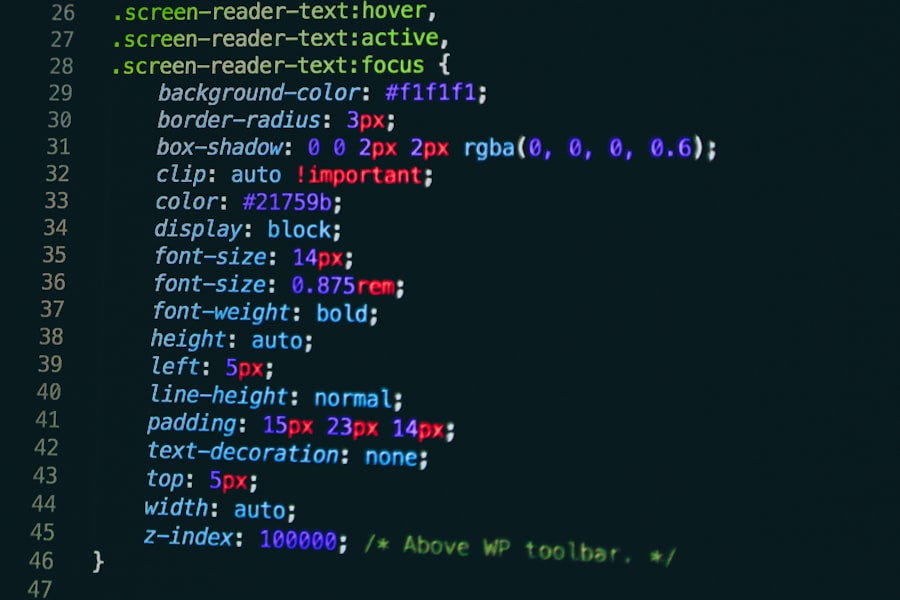JavaScript has evolved significantly since its inception in the mid-1990s, transitioning from a simple scripting language for web browsers to a powerful, versatile programming language that underpins much of modern web development. Initially created by Brendan Eich at Netscape, JavaScript was designed to enable interactive web pages, allowing developers to create dynamic content that could respond to user actions. Over the years, it has grown into a robust ecosystem, supported by a plethora of frameworks and libraries such as React, Angular, and Vue.js, which have further enhanced its capabilities.
The phrase “The Good Parts” is often associated with Douglas Crockford’s influential book, which highlights the strengths of JavaScript while also addressing its quirks and complexities. This perspective encourages developers to focus on the language’s most effective features, such as first-class functions, prototypal inheritance, and asynchronous programming. By understanding and leveraging these good parts, developers can write cleaner, more efficient code that enhances both performance and maintainability.
This article delves into the importance of quality JavaScript code, key concepts and features, common pitfalls to avoid, best practices for writing clean code, real-world applications, and tips for mastering the language.
Key Takeaways
- JavaScript has many good parts that make it a powerful and versatile language for web development.
- Quality JavaScript code is important for creating efficient, maintainable, and scalable applications.
- Key concepts and features of JavaScript include functions, objects, arrays, and prototypes.
- Pitfalls and bad practices to avoid in JavaScript include global variables, using == instead of ===, and not handling errors properly.
- Best practices for writing clean and efficient JavaScript code include using strict mode, avoiding unnecessary global variables, and optimizing loops and conditionals.
Understanding the Importance of Quality JavaScript Code
Quality JavaScript code is essential for several reasons, particularly in an era where web applications are expected to be fast, responsive, and user-friendly. First and foremost, well-written code enhances performance. Poorly structured or inefficient code can lead to slow load times and unresponsive interfaces, which can frustrate users and drive them away from a website or application.
In contrast, high-quality code optimizes resource usage and minimizes latency, resulting in a smoother user experience. Moreover, maintainability is a critical aspect of quality JavaScript code. As projects grow in complexity, the ability to read and modify code becomes paramount.
Code that is poorly organized or lacks clear documentation can become a burden for developers who need to troubleshoot issues or implement new features. By adhering to best practices and writing clean code from the outset, developers can ensure that their work remains accessible and manageable over time. This not only benefits individual developers but also fosters collaboration within teams, as clear and consistent code allows for easier onboarding of new team members.
Exploring the Key Concepts and Features of JavaScript

JavaScript is built on several key concepts that define its functionality and versatility. One of the most significant features is its support for first-class functions. In JavaScript, functions are treated as first-class citizens, meaning they can be assigned to variables, passed as arguments to other functions, and returned from functions.
Another important feature is prototypal inheritance, which allows objects to inherit properties and methods from other objects. Unlike classical inheritance found in languages like Java or C++, JavaScript’s prototypal inheritance provides a more flexible approach to object-oriented programming.
Developers can create objects that share behavior without the need for rigid class structures. This flexibility can lead to more dynamic and adaptable code designs. Asynchronous programming is another cornerstone of JavaScript’s architecture.
With the rise of web applications that rely heavily on network requests and user interactions, the ability to handle asynchronous operations has become crucial. JavaScript employs mechanisms such as callbacks, promises, and async/await syntax to manage asynchronous tasks effectively. This allows developers to write non-blocking code that can handle multiple operations simultaneously without freezing the user interface.
Uncovering the Pitfalls and Bad Practices to Avoid in JavaScript
Despite its many strengths, JavaScript is not without its pitfalls. One common issue is the misuse of global variables. When variables are declared without the `var`, `let`, or `const` keywords, they become global by default.
This can lead to unintended consequences, such as variable name collisions or unexpected behavior in different parts of an application. To mitigate this risk, developers should always declare variables with appropriate keywords and consider using modules or closures to encapsulate their code. Another prevalent bad practice is the overuse of callbacks, which can lead to “callback hell.” This occurs when multiple nested callbacks make code difficult to read and maintain.
While callbacks are a fundamental part of asynchronous programming in JavaScript, relying too heavily on them can result in convoluted code structures. Instead, developers should leverage promises or async/await syntax to create cleaner and more manageable asynchronous flows. Additionally, failing to handle errors properly can lead to significant issues in JavaScript applications.
Many developers neglect error handling in their code, assuming that everything will work perfectly. However, network requests can fail, user inputs can be invalid, and unexpected conditions can arise at any time. Implementing robust error handling mechanisms not only improves the reliability of an application but also enhances the user experience by providing meaningful feedback when something goes wrong.
Implementing Best Practices for Writing Clean and Efficient JavaScript Code
Writing clean and efficient JavaScript code requires adherence to several best practices that promote readability and maintainability. One fundamental principle is the use of meaningful variable and function names. Descriptive names provide context about what a variable or function does, making it easier for others (and oneself) to understand the code later on.
For example, instead of naming a variable `x`, a more descriptive name like `userAge` conveys its purpose clearly. Another best practice is to keep functions small and focused on a single task. This principle aligns with the Single Responsibility Principle (SRP) from software design patterns, which states that a function should have one reason to change.
By breaking down complex logic into smaller functions, developers can enhance code reusability and simplify testing processes. Consistent formatting is also crucial for clean code. Adopting a style guide—such as Airbnb’s JavaScript Style Guide—ensures uniformity in indentation, spacing, and other formatting aspects across a project.
Tools like Prettier or ESLint can automate formatting checks and enforce coding standards, helping teams maintain a cohesive codebase.
Leveraging the Power of JavaScript: The Good Parts in Real-world Applications

The good parts of JavaScript have been harnessed in numerous real-world applications that showcase its versatility and power. One prominent example is Node.js, a runtime environment that allows developers to execute JavaScript on the server side. Node.js leverages non-blocking I/O operations to handle multiple requests simultaneously, making it an ideal choice for building scalable web applications.
Companies like Netflix and LinkedIn have adopted Node.js for its performance benefits and ability to handle high traffic loads efficiently. In addition to server-side applications, JavaScript plays a crucial role in front-end development through frameworks like React. React’s component-based architecture allows developers to build reusable UI components that can manage their own state effectively.
This modular approach not only enhances code organization but also improves collaboration among team members working on different parts of an application. Major platforms like Facebook and Instagram utilize React to deliver dynamic user experiences that respond seamlessly to user interactions. Furthermore, JavaScript’s integration with APIs has opened up new possibilities for creating rich web applications.
For instance, developers can use the Fetch API or Axios library to make HTTP requests to external services, enabling functionalities such as data retrieval from databases or third-party services like payment gateways or social media platforms. This capability allows developers to create feature-rich applications that leverage existing services while providing users with seamless experiences.
Tips and Tricks for Mastering JavaScript: The Good Parts
Mastering JavaScript requires continuous learning and practice due to its evolving nature and vast ecosystem. One effective tip is to engage with the community through forums like Stack Overflow or GitHub discussions. Participating in discussions not only helps clarify doubts but also exposes developers to different perspectives and solutions from experienced practitioners.
Another valuable approach is to work on personal projects or contribute to open-source initiatives. Building real-world applications allows developers to apply their knowledge practically while honing their skills in problem-solving and debugging. Additionally, collaborating with others on open-source projects fosters teamwork and exposes developers to best practices used by seasoned professionals.
Utilizing online resources such as tutorials, courses, and documentation is also essential for mastering JavaScript. Websites like MDN Web Docs provide comprehensive documentation on JavaScript features and APIs, while platforms like freeCodeCamp offer interactive coding challenges that reinforce learning through hands-on experience. Lastly, staying updated with the latest developments in the JavaScript ecosystem is crucial for any developer aiming for mastery.
Following influential figures in the community on social media platforms or subscribing to newsletters can help keep one informed about new libraries, frameworks, and best practices emerging in the field.
Conclusion and Resources for Further Learning
As we navigate through the complexities of modern web development, understanding the good parts of JavaScript becomes increasingly vital for creating high-quality applications that meet user expectations. By focusing on writing clean code while leveraging key features such as first-class functions and asynchronous programming capabilities, developers can enhance both their productivity and the overall performance of their applications. For those looking to deepen their knowledge further, numerous resources are available for continued learning.
Books like “You Don’t Know JS” by Kyle Simpson provide an in-depth exploration of core concepts in JavaScript that are often overlooked by beginners. Online platforms such as Codecademy or Udemy offer structured courses tailored for various skill levels. Engaging with community-driven platforms like GitHub not only allows developers to collaborate on projects but also provides access to countless repositories filled with examples of best practices in action.
By immersing oneself in these resources and actively participating in the community, aspiring developers can unlock the full potential of JavaScript while contributing positively to its ever-evolving landscape.
If you’re interested in learning more about JavaScript and its best practices, you may want to check out this article on hellread.com. This website offers a variety of insightful articles on programming languages, including a piece that discusses the book “JavaScript: The Good Parts” by Douglas Crockford. By reading this article, you can gain a deeper understanding of the key concepts and techniques outlined in Crockford’s book.
FAQs
What is “JavaScript: The Good Parts” by Douglas Crockford?
“JavaScript: The Good Parts” is a book written by Douglas Crockford that focuses on the best practices and most useful features of the JavaScript programming language.
What is the main focus of “JavaScript: The Good Parts”?
The main focus of “JavaScript: The Good Parts” is to highlight the good parts of the JavaScript language and to guide developers on how to write effective and efficient code using those parts.
Who is Douglas Crockford?
Douglas Crockford is a computer programmer and entrepreneur who is known for his work in the field of JavaScript and for his contributions to the development of the JSON data interchange format.
What are some of the key concepts covered in “JavaScript: The Good Parts”?
Some of the key concepts covered in “JavaScript: The Good Parts” include functions, objects, arrays, inheritance, and methods for improving code quality and performance.
Is “JavaScript: The Good Parts” suitable for beginners?
“JavaScript: The Good Parts” is more suitable for intermediate to advanced JavaScript developers who are looking to deepen their understanding of the language and improve their coding practices. Beginners may find the content challenging.







